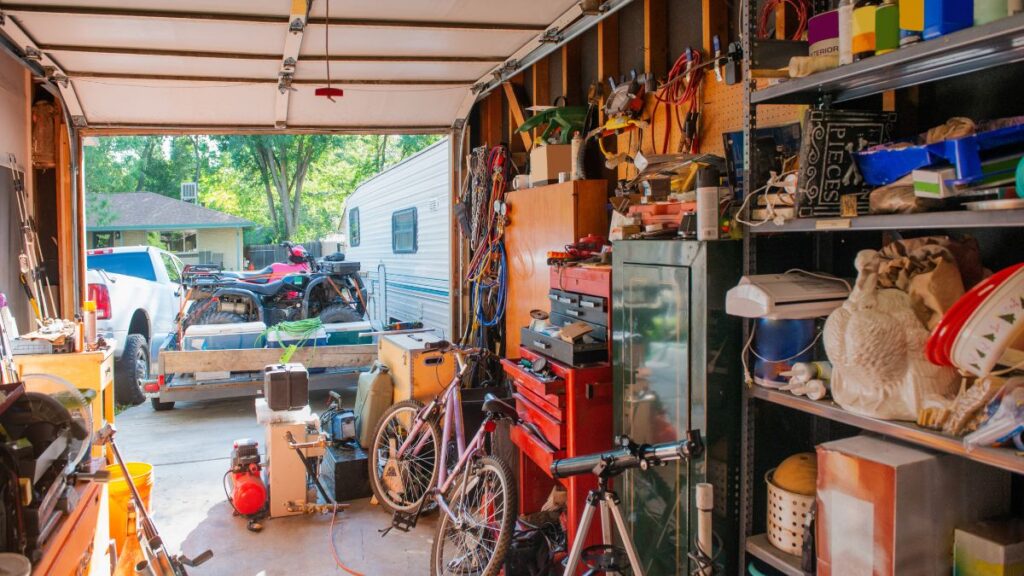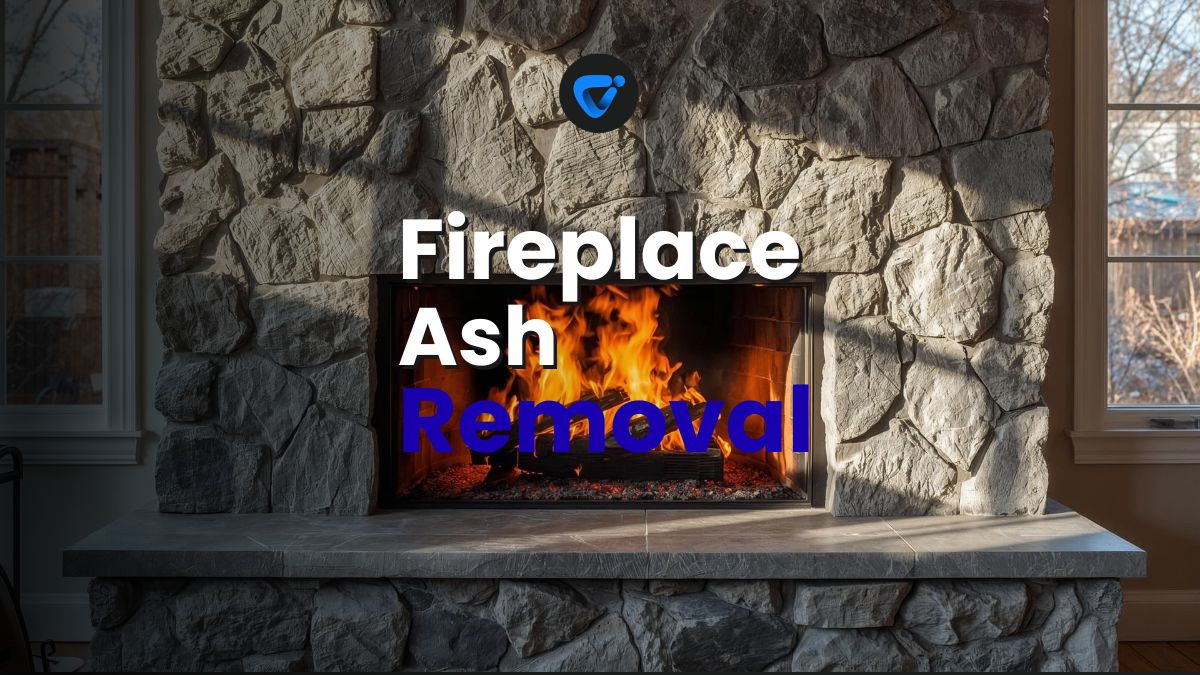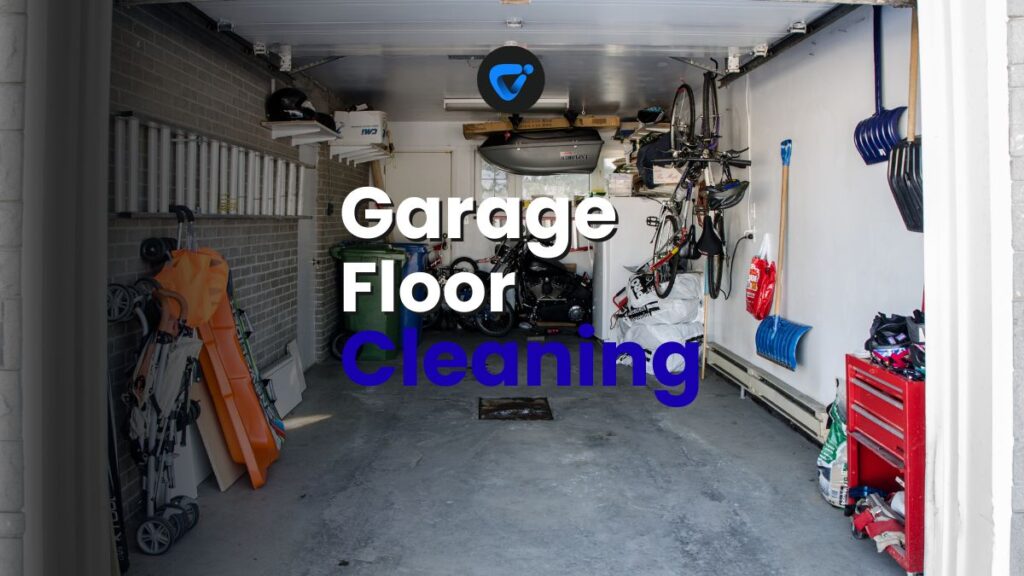
Families spend more time in this high-traffic catch-all space than many realize. It hosts everything from muddy bikes and oil-dripping vehicles to late-night DIY crafts around a folding table. Keeping oil patches in check keeps both safety and home pride intact—nobody wants oily residue tracked inside the house.

Fireplace Ash Removal Without the Mess
Clean your fireplace the smart way! Learn how to remove ash without the mess and keep your hearth spotless.
This guide invites you to discover home-cleaning micro-guides designed to make oil stain removal a routine task rather than a dreaded ordeal. You’ll learn direct actions, see what works side-by-side, and finish feeling ready for a spot-free garage.
Tackling Fresh Oil Spots—Act Fast for the Best Results
Addressing new oil drips sets the stage for easy oil stain removal later. The first few minutes matter—catching spills early stops them from soaking into the concrete’s pores.
As soon as a fresh oil spot appears, grab a roll of shop towels or even thick paper napkins. Press firmly to blot—not rub—the oil. Rubbing just spreads the mess and can grind the oil deeper. Place one towel atop the patch and step on it gently. Switch to clean towels until minimal new oil transfers.
Use Absorbent Powders Immediately
Homeowners swear by cat litter—simply pour it directly onto the spot and press it in with your shoe. This gritty absorbent soaks up excess oil efficiently.
After 30 minutes, sweep away the cat litter and inspect the patch. There’s usually a lighter zone left where most obvious oil once sat. This limits how much seeps down—key for great oil stain removal.
Baking soda or cornstarch also do the trick. Cover the area and leave it overnight. In the morning, sweep it clear. Both are safe on skin so you’ll avoid any irritation while scrubbing.
Apply Garage-Safe Degreasers
Modern degreasers target oil and grease without damaging garage flooring materials. Look for formulas labeled “biodegradable” or “concrete safe” to avoid harsh residues.
Spray a generous amount, let it dwell—about 10 minutes—and agitate with a stiff nylon brush. The scrubbing lifts oil particles to the surface for easy rinsing later. Rinse with minimal water to prevent pushing the oil deeper.
Degreasers remove staining while preserving concrete finish, offering a fast, targeted approach to oil stain removal.
| Absorbent | Cost per Use | Ease of Cleanup | Ideal When… |
|---|---|---|---|
| Cat Litter | Low | Simple sweep | Fresh, thick oil pools |
| Baking Soda | Medium | Brush/sweep up | Thin, small stains |
| Cornstarch | Medium | Vacuum or sweep | Kids & pets present |
| Commercial Absorbent Pads | High | Tossable, no dust | Workshops, busy garages |
| Shop Towels | Low | Disposable, quick | Tiny spots, frequent drips |
Lifting Stubborn Set-In Stains Using Everyday Items
When blotting and absorbents have only faded the blotch, a deeper cleaning step helps conquer long-standing stains. Thin marks that linger can usually be “lifted” with what’s already in your pantry.
One effective approach relies on kitchen staples. Dish soap and hot water form a classic duo against greasy residue, while the addition of baking soda gives extra scrubbing power for oil stain removal.
Mix a Homemade Cleaning Paste
Combine dish soap, baking soda, and a little warm water to make a grainy, spreadable paste. Smear it directly onto the stain, working it firmly into concrete pores with a stiff brush.
- Scoop out about 1/4 cup baking soda—enough to cover a six-inch patch—and spread thinly.
- Add a squirt of dish soap for grease-busting action that cuts through oily grime.
- Add just enough water to form a paste so it stays put instead of sliding off.
- Let it sit for 30 minutes. This dwell time allows the soap to break down oil molecules and the powder to loosen stubborn patches.
- Scrub briskly in circular motions to dig out grime, then rinse with warm water and wipe dry with clean towels. Check the spot—repeat if needed for deeper oil stain removal.
This technique works especially well on smooth concrete or painted floors since the paste method won’t scratch finishes.
Try Spot-Treatment Products Wisely
Commercial oil stain removers offer potent action—some are gel-based, adhering to vertical surfaces or uneven cracks. For maximum effect, follow the instructions exactly.
- Brush off dry dirt. Loose dust weakens any cleaner and pulls more oil toward the floor.
- Layer the product thick enough to cover every inch of the stain for even exposure.
- Let the recommended dwell time pass before scrubbing to avoid premature drying.
- Agitate with a stiff nylon or wire brush—not metal, which can gouge concrete and expose new pores to future stains.
- Rinse and wipe vigorously, repeating only if needed for full oil stain removal. Surface feels less slick, signaling success.
Some brands use citrus oils to break down automotive grease. These lift dark marks without harsh odors—ideal for garages with limited airflow.
Deep Cleaning Sealed and Unsealed Garage Floors Step by Step
Knowing whether your floor is sealed determines your safest approach to oil stain removal. Sealed floors react best to gentler cleaners, while unsealed concrete welcomes more aggressive scrubbing.
Unsealed surfaces soak up spills easily but also hold onto dirt—requiring thorough pre-treatment and slightly stronger products for satisfactory oil stain removal outcomes.
Cleaning Sealed Concrete Floors Without Damage
For garage floors treated with a sealer or epoxy coating, prioritize mild cleaners and gentle scrubbing. Harsh scrubbing can scratch shiny coatings and dull their finish permanently.
Use a soft-bristled brush and a pH-neutral cleaner. Spray and let it dwell for 10 minutes, then work in gentle circles. Rinse away grime, letting the surface air dry fully before walking on it.
If a mark persists, repeat with a dedicated concrete spot cleaner, always testing first on a hidden area to ensure no cloudiness.
Restoring Unsealed Concrete: Stronger Methods That Work
For bare concrete with old oil stains, mix trisodium phosphate (TSP) and warm water according to package directions for a heavy-duty degreaser.
Apply the mixture liberally, wear gloves, and use a stiff brush to scrub. Rinse thoroughly and inspect the patch. For persistent stains, sprinkle dry TSP powder, add water, and repeat the process as needed.
This method removes both new and deep-set oil residue, giving neglected garages a noticeable improvement and better oil stain removal long-term.
Prevention Tactics That Stop Oil Stains Before They Start
Preventing oil stains keeps maintenance minimal and reduces long-term cleaning needs. A little planning—just minutes each month—means less need for labor-intensive oil stain removal down the road.
Keep drip pans or mats beneath parked vehicles, especially if you habitually notice dark spots under your car or motorcycle.
Regular Sweep-and-Inspect Routine
Set aside a few minutes at the end of each week to sweep your garage. During this sweep, inspect for new oily spots or changes in old stains.
Prompt cleanup stops fresh drips from becoming permanent. Call out every family member—if you drive into the garage, you monitor your own spot and clean up right away.
Incorporating oil stain removal into the sweep-and-inspect routine keeps your space inviting and safer week to week.
Schedule Monthly Floor Maintenance Checks
Monthly visual inspections help spot new issues—like mystery drips, uneven wear, or loose coatings—before they snowball.
Put a reminder on your calendar or use a dry-erase board in the garage for accountability. Mark future checks in advance to build a maintenance rhythm.
During these sessions, reapply sealant or replace worn drip mats as needed. This proactive method ensures most oil stains never take hold.
Comparing Commercial and DIY Oil Stain Removers
Choosing between store-bought and homemade oil stain removal solutions can feel overwhelming. Side-by-side testing reveals each method’s unique strengths and drawbacks for home cleaning.
DIY options use simple, low-toxicity ingredients found in most kitchens, while commercial formulas offer potent combinations specifically tailored for deep garage stains.
| Remover Type | Cost | Safety for Family/Pets | Effectiveness for Old Stains | Takeaway |
|---|---|---|---|---|
| Dish Soap + Baking Soda | Low | High | Moderate | Best for new or thin spots; repeat as needed |
| Citrus Solvent | Medium | Moderate | High | Works on tough marks with less odor |
| Commercial Degreaser | High | Moderate | High | Best for multiple, old patches |
| Trisodium Phosphate (TSP) | Low | Low | Very High | Strong but wear PPE; not for sealed floors |
| Power Washer | High | High | Varies | Cuts time for large areas if used correctly |
Checklist: Choose Your Oil Stain Removal Method
- Assess stain age: Use mild methods for new, tougher solvents for old marks
- Check garage floor surface: Select products safe for sealed or unsealed floors
- Prioritize safety: Use gloves, eye protection, and ventilate the area with fans or open doors
- Time available: Opt for absorbent powders for fast fixes; reserve power washing for all-day projects
- Household health: Stick with kitchen ingredients if children or pets use the garage floor regularly
Matching the technique to your circumstances makes oil stain removal efficient and safe for every household.
Real-World Cleaning Routine: Keeping Your Garage Spotless
A consistent, streamlined cleaning routine maintains your garage floor for the long haul—no marathon scrubbing sessions needed. Consistency means oil stain removal remains manageable, not overwhelming.
Each weekly session should follow a checklist to cover all the main “spill zones” and catch stray drips early.
Weekly Five-Step Cleaning Sequence
- Clear clutter: Move boxes, bikes, or storage bins so you can view the entire floor unobstructed—oil stain removal never works under hidden piles.
- Sweep thoroughly: Use a stiff push-broom to corral fine dust, loose dirt, and grit—debris grinds new oil deeper if left in place.
- Inspect all high-traffic areas: Scan under parked vehicles, by the workbench, and near oil containers. Spot new drips while they’re bright and treat promptly.
- Clean up minor stains: Blot or spot-treat any fresh new oil spots as described in earlier sections. Use baking soda and a brush for regular touch-ups.
- Maintain prevention: Reposition drip pans, check for worn-out garage mats, and recharge absorbents. These interventions prevent future oil stain removal struggles.
Maintaining this routine takes under 20 minutes weekly and keeps oil from becoming a permanent feature of your garage.
Monthly Deep Dive Mini-Process
On the first Saturday each month, schedule a deeper clean: commit to thirty minutes, so old stains never become a crisis. Wear non-slip shoes and old work clothes for safety and flexibility.
Start with the toughest, oldest stains first—tackle the “worst corner” and use a stronger degreaser or a power washer if you have one available.
Once stains are gone, apply concrete sealant according to manufacturer’s instructions if needed—this creates a water-repellent barrier for future oil stain removal.
Quick-Reference Table: Choosing the Right Oil Stain Removal Approach
| Situation | Best DIY Option | Store Solution | Action Step |
|---|---|---|---|
| Fresh Drip | Baking Soda + Dish Soap | Biodegradable Degreaser | Blot, absorb, scrub lightly |
| Old, Dark Patch | TSP Paste | Heavy-Duty Oil Remover | Apply, let sit, agitate aggressively |
| Sealed Floor, Minor Spill | Warm Water + Neutral Soap | Gentle Epoxy Cleaner | Wipe gently, dry completely |
| Unsealed Floor, Large Stain | Dry Absorbent, then Scrub | Power Degreaser Spray | Layer methods, repeat as required |
| Busy Garage, Ongoing Drips | Absorbent Mats | Barrier Pads | Swap weekly, inspect beneath |
Frequently Asked Questions
Clean up oil as soon as you notice it. Blotting and using absorbent powder within minutes prevents oil from soaking deep into the concrete, making oil stain removal much easier and far more effective.
Baking soda, dish soap, and absorbent kitchen powders like cornstarch are reliable for DIY cleaning. For tough marks, combine with elbow grease and let paste mixtures sit before rinsing for true oil stain removal.
Pressure washing is helpful for large areas but use caution. For oil stain removal, pre-treat spots and avoid pushing oil deeper into cracks. Always keep water use moderate to reduce mess and improve results.
If oil soaks deep into the concrete, stains may seem to fade and return as the surface dries. Multiple rounds of oil stain removal, drying, and sealing the floor can prevent stains from resurfacing over time.
Trisodium phosphate (TSP) is strongly alkaline and best for unsealed concrete. For painted or sealed floors, stick with mild cleaners to avoid dulling or damaging protective coatings while aiming for clean oil stain removal.

Unclogging Slow Drains
Unclog slow drains naturally! Use simple household methods to clear buildup without harsh chemicals or plumber costs.


